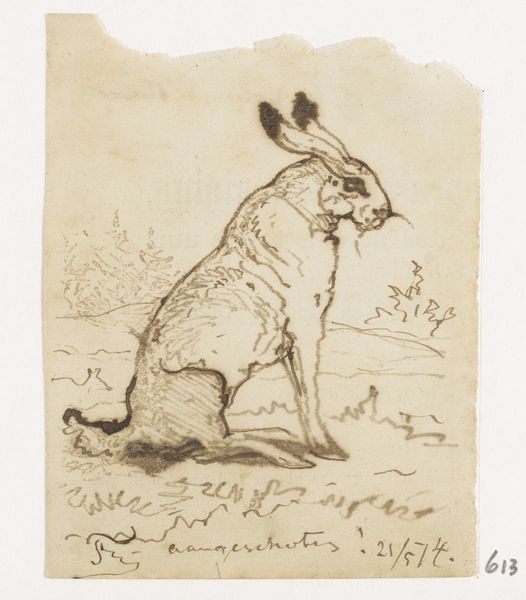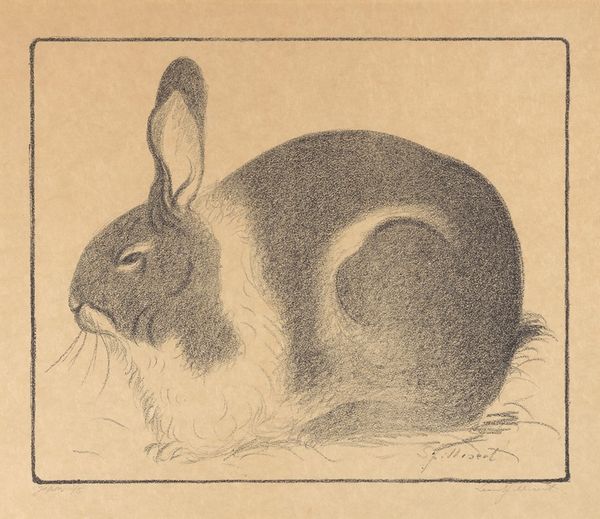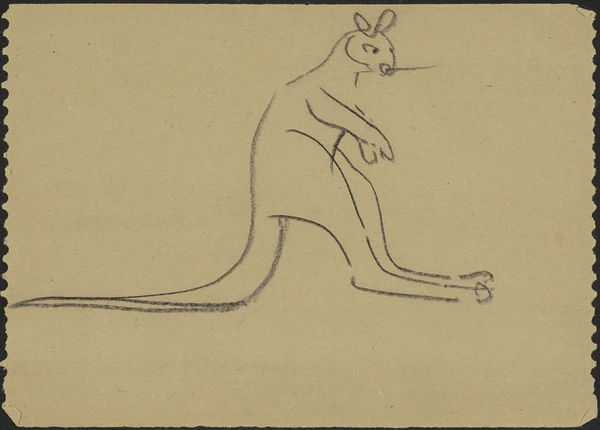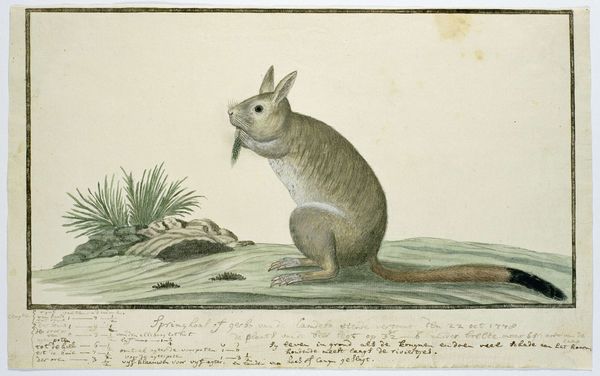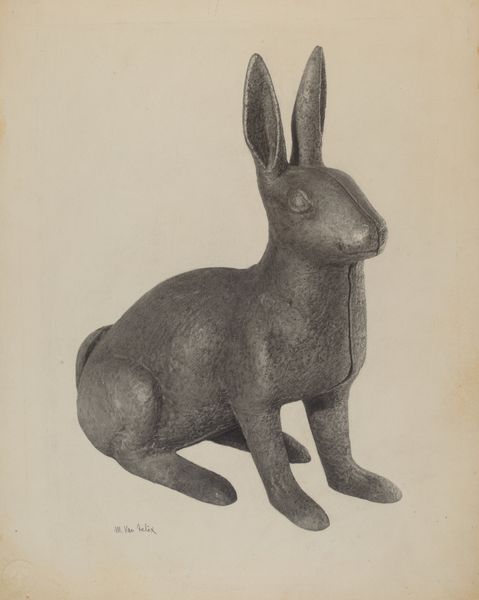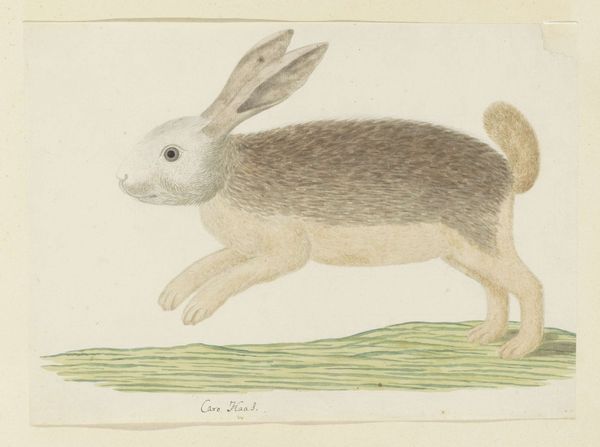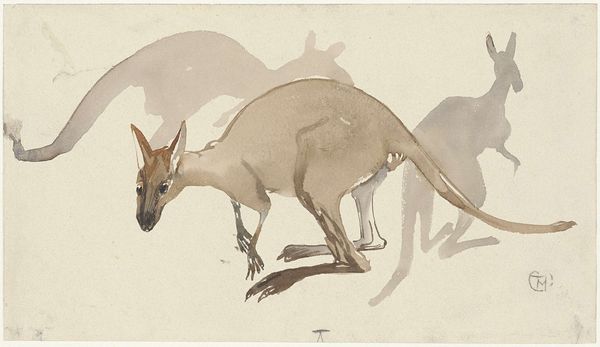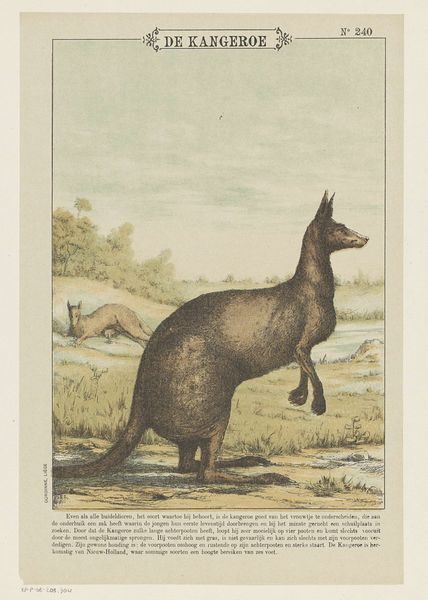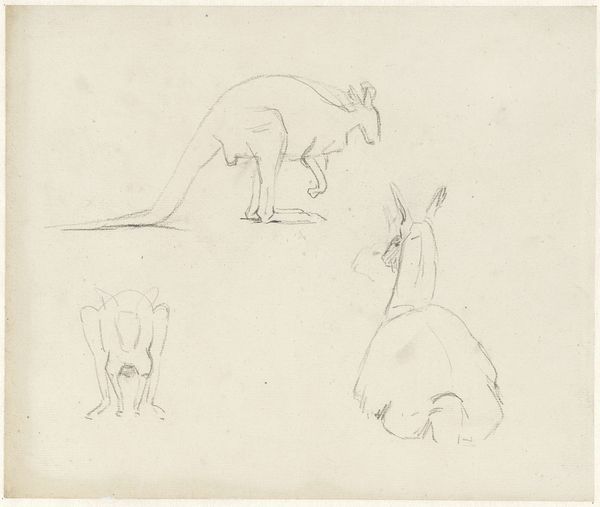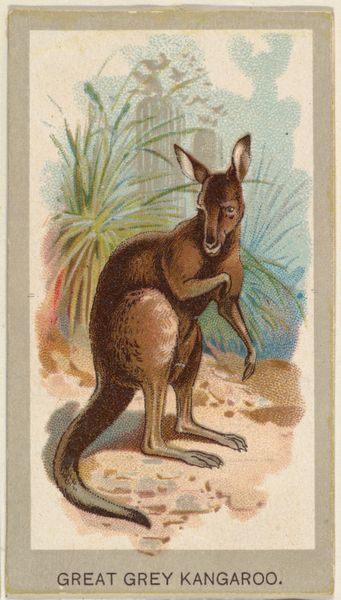
#
photo of handprinted image
#
aged paper
#
toned paper
#
light pencil work
#
wedding photograph
#
photo restoration
#
pencil sketch
#
old engraving style
#
watercolour illustration
#
watercolor
Dimensions: height 237 mm, width 211 mm
Copyright: Rijks Museum: Open Domain
Editor: So this is Isaac van Haastert's "Kangoeroe," made sometime between 1763 and 1834. It looks like a watercolor and pencil drawing on paper, currently residing at the Rijksmuseum. It has an almost naive quality, like a child's drawing. What stands out to you? Curator: It's fascinating to consider this through the lens of material history. The paper itself, the pigments available for the watercolour, even the pencils used – they all point to the limited resources and the specific trade routes of the time. Imagine the cost and labor involved in acquiring those materials! Editor: Right! The artist didn't just wake up one morning and decide to paint a kangaroo! How does the "newness" of this animal figure into it all? Curator: Exactly! And it also affects our interpretation. A European audience's first encounter with such an exotic animal would have been heavily mediated by sketches like this, or written accounts. Each telling influenced and changed the understanding. Editor: I never really thought of the artwork as something that altered material or was materially contingent in itself, instead only how its cultural references informed its meaning.. I think this definitely changes the way I view not just this, but all art. Curator: The consumption of images and stories around something unknown like the kangaroo feeds this cultural process. It highlights how limited access affected understanding and even led to misconceptions! What did *you* learn about thinking materially while doing this project? Editor: That the very materials artists use carry their own histories! Knowing where the paper came from, or what pigments were available at the time, can open up a whole new dimension of interpretation, linking art directly to trade, labor, and global exchange.
Comments
No comments
Be the first to comment and join the conversation on the ultimate creative platform.

